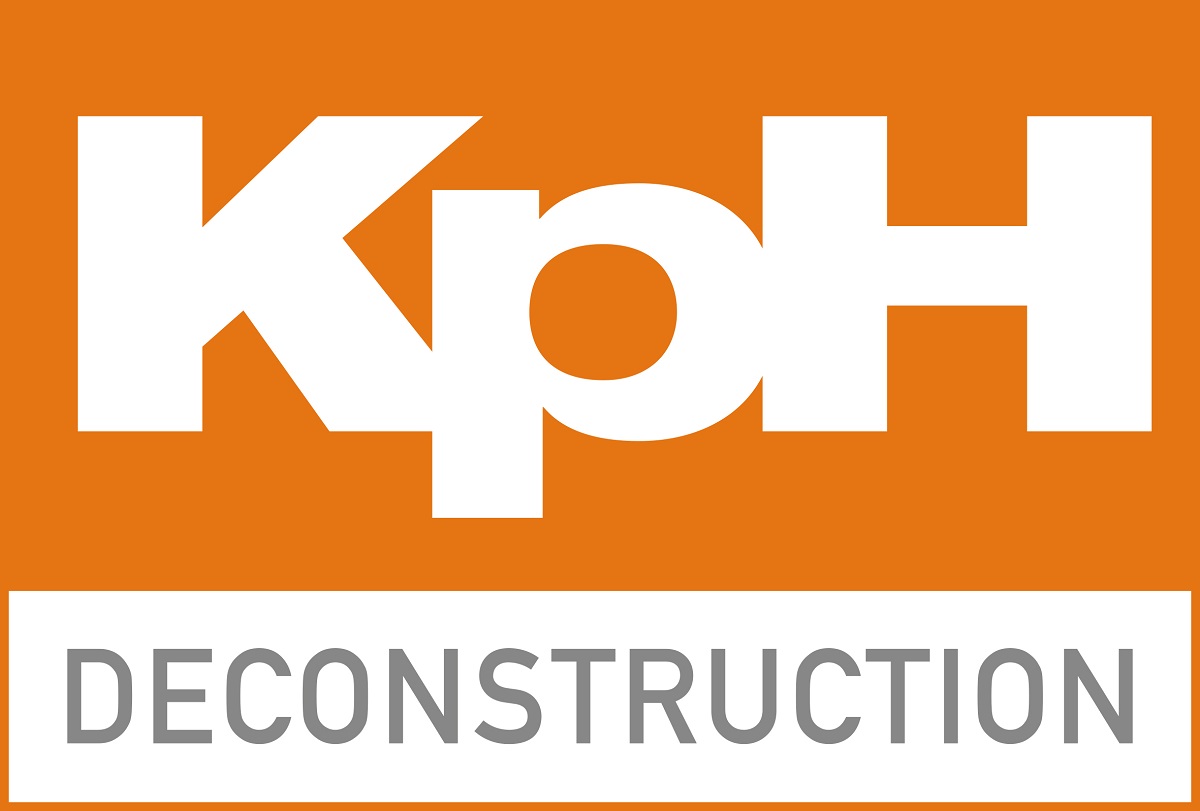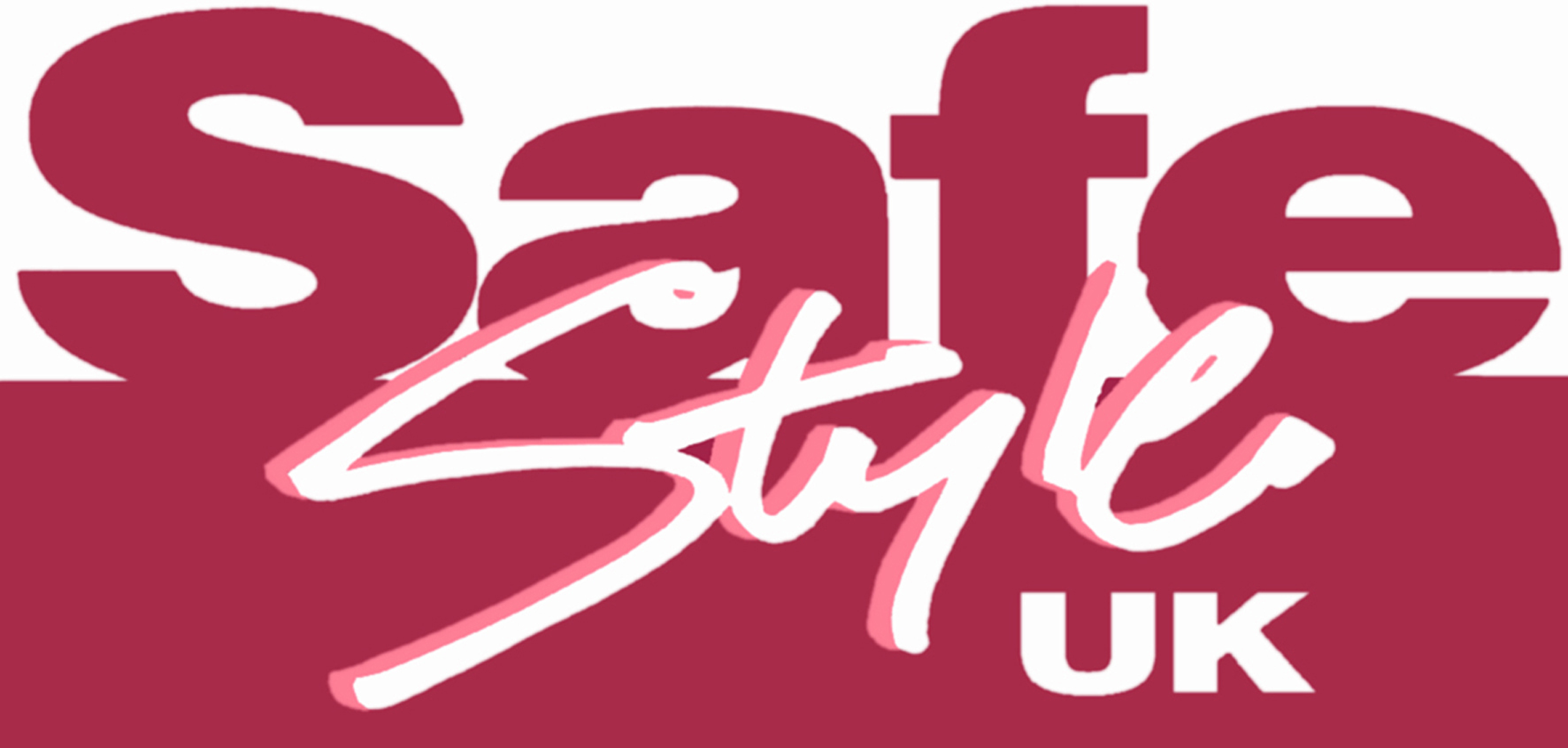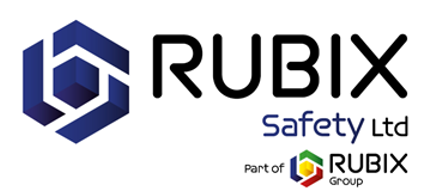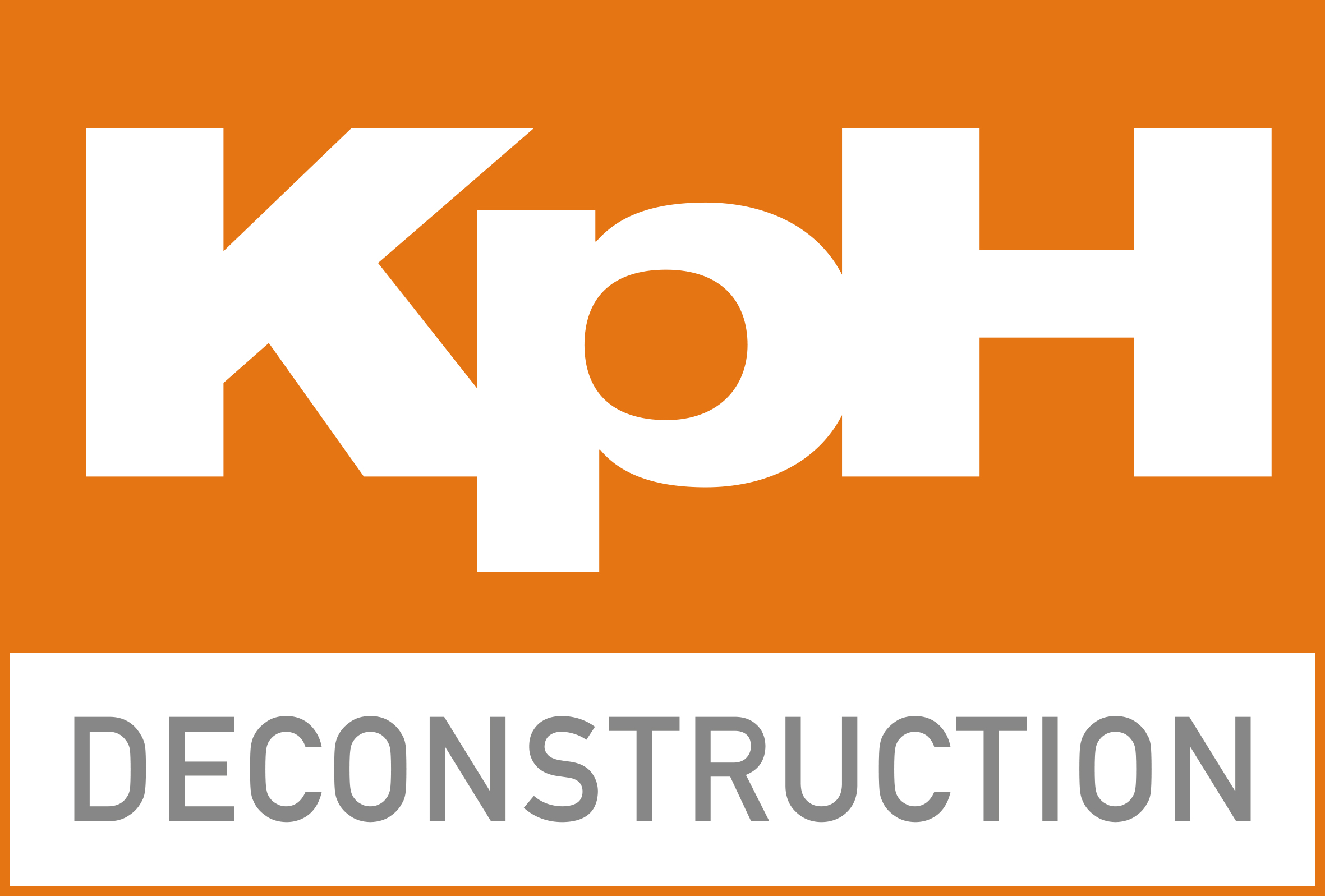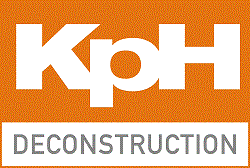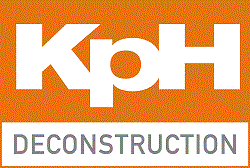Title Page
-
KpH ref No.
-
Site Name
-
Client
-
Conducted on
-
Prepared by
-
Site Manager
Admin Site documents
Risk Assessment & Method Statements (RAMS)
-
Have the initial RAMS been completed for the general strip out elements of the project?<br>
-
Has individual RAMS been developed for higher risk activities like screed removal, lift removal, stair removal etc?
-
Has a safety briefing been created for each activity daily?
Site induction
-
Have all operatives currently on site been inducted into the safe system and signed to say they understand their responsibilities?
-
Have all staff filled in and signed their induction paperwork, making sure the Supervisors is aware of any reason why they cannot carry out their works as assessed?
Training
-
Has everyone undergone KPH onboarding and provided the supervisor with their unique number?
-
Do all Operatives have the minimum requirement of in date:<br>CSCS /CCDO card, Asbestos Awareness, Face Fit.<br>
-
If specialist task are being carried out that require additional certificates are the certificates in date and on site?<br>i.e. PASMA, IPAF, Abrasive wheels, Harness, Burning etc.
-
Are regular tool box talks being carried out? (min 1 a week)
-
Where identified are regular competency checks being carried out and recorded?
Permits
-
Where a permit is required for high risk activities has a permit been issued?
-
Where a permit has been issued previously, has it been returned to the office at the end of the day and signed back and complete correctly?
Further RAMS
-
Have you checked the main RAMS and identified if there are any missing task specific RAMS.
-
Do you required any RAMS for works programmed within the next two weeks?<br>
-
Add details of required RAMS
-
Enter area pictures
Accidents and Incidents
-
Has there been any site accidents or incidents since my last visit?
-
Has the incident been reported and the accident investigation form filled in a sent back into the office?
Site paperwork when KpH is principal contractor
-
Is KpH the main contractor on site?<br>
Site induction
-
Is there a visitors register and has it been properly completed by all of those on site?
-
Have all the visitors read and singed the visitors induction?
-
Has each operative filled out an induction form, medical and HAVS initial assessment where required?
Other paperwork
-
Is there a copy of the Asbestos R&D survey on site, if the building was built before 2000?
-
Is there signage displayed to say who is the first aiders, translators, fire warden for the site?<br>
-
Has all the sub-contractor RAMS been reviewed and signed off by the site manager?
-
Has at least one fire drill been carried out/planned and recorded?<br>
-
Is there a register in place and is it being used to check fire exits (daily) and fire extinguishers (weekly)?
-
Is there a cleaning rota in place for the canteen and Toilets and is it being implemented?
Site signage
-
Is there suitable signage to show where the safe route is and where the site starts?
-
Is there signage to prevent others (members of the public) from entering a construction site and what PPE is required?<br>
-
Are the floor safety boards set up correctly to make others aware of the dangers on that floor? Details to include: signage first aid location, drawing of fire exit plan, signage of PPE to be worn, Site staff details, spare ear plugs, location of nearest glass cleaning station.
CCS
-
Is this a registered CCS site?
-
Has the site been registered with CCS?
-
Have the banners and posters been displayed around the entrance of the site?
-
Has the site boards been set up at each entrance (externally for public)?
-
Poster to display include: Site contact details & Out of hours details, Company posters (local charities etc) any info on local community engagement, Info on what CCS is, Info on what we are doing to the site, Mission statement
-
Has the site entrance board been set up as soon as you enter site?
-
this includes: details of where the office is located, F10 info, H&S statement, Environmental policy statement, Waste carriers licence, Insurance details, Fire plan for building, first aid point, translators for site, AED locations, sign in location
-
Is there a welcome and sign in point?
-
Includes pictures of translators, meet the team posters and subcontractors, mental health champion, CCS poster for helpline with cards, Mission statement what we have done, travel distance map, sign in registers, first aid location and A&E map including minor injury unit location,
-
Has the canteen been set up with health and well being poster?
-
Has an awareness campaign been picked for the site? i.e Spotlight on plastic, Dust buster, HAVS etc.?
-
Does each floor have a health and safety board?
PUWER
Provision and Use of Work Equipment Regulations 1998 PUWER
-
Work equipment which is exposed to conditions causing deterioration that could result in a dangerous situation should be inspected at suitable intervals (weekly on site and 3 monthly by a competent person in the yard) and after every event liable to jeopardise its safety.
-
Has the original PUWER inspection register been carried out for all equipment and the PAT date recorded?
-
Has all electrical equipment on site been checked by a competent person weekly and recorded that the pat date has not expired?
-
Where assessed are electrical tools in a good condition? (i.e. no broken safety guards; cables in good clean condition - no bare wires; housing of the equipment in good condition)
-
Is there a suitable way to quarantine tools that are found to be faulty before being returned to the yard/hirer for exchange/repair?
LOLER
Lifting Operations and Lifting Equipment Regulations 1998 (LOLER)
-
These Regulations (often abbreviated to LOLER) place duties on people and companies who own, operate or have control over lifting equipment.
-
Are you using lifts on site?
-
Is there an emergency plan to enable help to be given to anyone trapped in a passenger lift on the site?
-
Is there a ‘what to do if the lift stops’ instructions displayed in all the lift cars?
-
Is there any lifting operations taking place on site?
-
Has the last thorough inspection date been recorded for the equipment on site?
-
Have you checked the SWL of the equipment will not be exceeded?
-
Has all operators of lifting equipment such as forklifts, cranes, MEWPs and hoists carried out a safety check each day prior to<br>the equipment being used?
-
Are you using Slings, Eyebolts, shackles and similar lifting accessories?
-
Is there a designated store to minimise damage when not in use?
-
Is there appropriately trained people in safe rigging/slinging techniques?
Welfare
Site toilets
-
1.—(1) Suitable and sufficient sanitary conveniences must be provided or made available at readily accessible places.
(2) So far as is reasonably practicable, rooms containing sanitary conveniences must be adequately ventilated and lit.
(3) So far as is reasonably practicable, sanitary conveniences and the rooms containing them must be kept in a clean and orderly condition.
(4) Separate rooms containing sanitary conveniences must be provided for men and women, except where and so far as each convenience is in a separate room, the door of which is capable of being secured from the inside. -
Is there suitable toilet facilities?
Site Canteen
-
Rest facilities
5.—(1) Suitable and sufficient rest rooms or rest areas must be provided or made available at readily accessible places.
(2) Rest rooms and rest areas must—
(a) be equipped with an adequate number of tables and adequate seating with backs for the number of persons at work likely to use them at any one time;
(b) where necessary, include suitable facilities for any woman at work who is pregnant or who is a nursing mother to rest lying down;
(c) include suitable arrangements to ensure that meals can be prepared and eaten;
(d) include the means for boiling water; and (e) be maintained at an appropriate temperature. -
Is there suitable facilities for rest?<br>
Drinking water
-
Drinking water
3. — (1) an adequate supply of wholesome drinking water must be provided or made available at readily accessible and suitable places.
(2) Where necessary for reasons of health or safety, every supply of drinking water must be conspicuously marked by an appropriate sign.
(3) Where a supply of drinking water is provided, a sufficient number of suitable cups or other drinking vessels must also be provided, unless the supply of drinking water is in a jet from which persons can drink easily. -
Is there suitable drinking water?<br>
Washing Facilities
-
Washing facilities
2.—(1) Suitable and sufficient washing facilities, including showers if required by the nature of the work or for health reasons, must, so far as is reasonably practicable, be provided or made available at readily accessible places.
(2) Washing facilities must be provided—
(a) in the immediate vicinity of every sanitary convenience, whether or not also provided elsewhere; and
(b) in the vicinity of any changing rooms required by paragraph 4, whether or not provided elsewhere.
(3) Washing facilities must include—
(a) a supply of clean hot and cold, or warm, water (which must be running water so far as is reasonably practicable);
(b) soap or other suitable means of cleaning; and
(c) towels or other suitable means of drying.
(4) Rooms containing washing facilities must be sufficiently ventilated and lit.
(5) Washing facilities and the rooms containing them must be kept in a clean and orderly condition.
(6) Subject to paragraph (7), separate washing facilities must be provided for men and women, except where they are provided in a room the door of which is capable of being secured from inside and the facilities in each room are intended to be used by only one person at a time.
(7) Sub-paragraph (6) does not apply to facilities which are provided for washing hands, forearms and the face only. -
Is there suitable washing facilities?<br>
Changing facilities
-
Changing rooms and lockers
4.—(1) Suitable and sufficient changing rooms must be provided or made available at readily accessible places if a worker—
(a) has to wear special clothing for the purposes of construction work; and
(b) cannot, for reasons of health or propriety, be expected to change elsewhere.
(2) Where necessary for reasons of propriety, there must be separate changing rooms for, or separate use of rooms by, men and women.
(3) Changing rooms must—
(a) be provided with seating; and
(b) include, where necessary, facilities to enable a person to dry any special clothing and any personal clothing or effects.
(4) Suitable and sufficient facilities must, where necessary, be provided or made available at readily accessible places to enable persons to lock away—
(a) any special clothing which is not taken home;
(b) their own clothing which is not worn during working hours; and
(c) their personal effects -
Is there is suitable changing facilities?<br>
Site signage
-
Is there signage to indicate certain hazardous condtitons? i.e.. Asbestos removal, open voids (where RAF is being removed) Noisy works, Dusty works
-
Is there appropriate signage to show what services are live? KpH uses laminated signage every couple of meters along cables or if the cable disappears through a wall or junctions.<br>Red spray paint is to say its live or must remain, Green spray paint shows it is to go.
Temporary electrics
-
Is there somewhere safe to plug site 110v equipment into?
-
Are cables neatly stored when not in use.
Waste
-
Is waste neatly segregated and stored in bins or behind barriers in designated waste areas?
-
Where waste is being removed is the correct dust suppression being used?
PPE
-
Are all operatives wearing mandatory 5 point PPE?
-
Are operatives wearing suitable foot protection. (Midsole protectors, steel toecap boots, ankle support)
-
Is the correct PPE being worn for the particular activity? i.e.. noisy works, dusty works, working with Sharpe's etc.
-
Where dust masks are assessed to be worn is the operative cleanly shaven?
-
Are the operatives seen as wearing the PPE correctly? Kevlar sleeves pulled up, Dust mask straps correctly round the head, high vis not ties round waist.
-
Is there the need to use a harness on site?
-
Where a harness is being used for personal protective equipment has it been checked prior to use by a competent trained person.
-
When using a harness is there an appropriate anchor point?
-
Are Harnesses stored correctly off the floor and away from hazards in a dry clean condition?
-
Has the issuing of the harness to the individual been recorded on the PPE register?
Working at height
-
Do all towers/ podiums have an in date Scaff tag?
-
Are the working towers/podiums correctly assembled in accordance with the manufactures guidance? (toe boards, out riggers)
-
Are the towers the right size for the works?
-
When working near a leading edge are the hazards correctly identified and fall prevention put in place?
-
Where personal fall prevention is implemented is it appropriate for the works and the operative suitably competent to use it?
-
Where there is a risk of falling materials has the area below been made safe with signage and barriers to create and exclusion zone.
-
Where there is a risk of falling tools are tethers in use?
-
Where a hole has been created is there correct making safe with signage and barriers or securely covered over?
-
Where scaffolding is in use have you received a certificate to say it is safe to access or is there signage to prevent access?
-
Has an Access Platform assessment been filled out by all operative working with or near access equipment, Cleary showing the roles and responsibilities of those involved.
Services
-
Are all live services clearly visible with signage/spray?
-
Are Isolation certificates in place for the working areas?
-
Where service are to be removed has the cable been cut and is the cut end visible?
-
When removing the services are hangers removed at the same time to prevent having to come back and snag at a later date?
-
When removing the services are the hangers cut to a safe length and bent back up on themselves?
Lighting
-
Is there suitable lighting to provide a safe working environment?<br>Lighting<br>35.—(1) Each construction site and approach and traffic route to that site must be provided with suitable and sufficient lighting, which must be, so far as is reasonably practicable, by natural light. <br>(2) The colour of any artificial lighting provided must not adversely affect or change the perception of any sign or signal provided for the purposes of health or safety. <br>(3) Suitable and sufficient secondary lighting must be provided in any place where there would be a risk to the health or safety of a person in the event of the failure of primary artificial lighting.
-
Where suspended ceilings are being removed is there suitable temporary lights to illuminate above into the ceiling void?
-
Where works are being carried out in small areas (toilets, risers etc.) away from the main works is there suitable task lighting being used?
Health Awareness
-
When working with vibratory tools or manually intensives tasks, is rotation being implemented and recorded correctly?
-
Has the vibration magnitude (m/s2) of the actual tool in use been recorded from the manufactures information for each person using the tools?
-
Where the vibration magnitude has been recorded has the maximum exposure time (trigger time) been recorded and explained to operator?
-
Is dust on site being properly controlled?
-
Are those not working in dusty areas protected from any dust created?
-
Is noise on site appropriately controlled and where required monitored?
-
Where required has a noise assessment been carried out by a competent person with a hand held device?
-
Are those not carrying out noisy works protected from any noise hazard?
-
Is manual handling kept to a minimum and alternative method used to reduce muscle damage?
-
What manual handling technique is in place?
-
Has a manual handling tool box talk been carried out on site?<br>
Fire
Fire detection and fire-fighting
-
32.—(1) Where necessary in the interests of the health or safety of a person on a construction site, suitable and sufficient fire-fighting equipment and fire detection and alarm systems must be provided and located in suitable places.
(2) The matters in regulation 30(2) must be taken into account when making provision under paragraph (1).
(3) Fire-fighting equipment or fire detection and alarm systems must be examined and tested at suitable intervals and properly maintained.
(4) Fire-fighting equipment which is not designed to come into use automatically must be easily accessible.
(5) Each person at work on a construction site must, so far as is reasonably practicable, be instructed in the correct use of fire-fighting equipment which it may be necessary for the person to use.
(6) Where a work activity may give rise to a particular risk of fire, a person must not carry out work unless suitably instructed.
(7) Fire-fighting equipment must be indicated by suitable signs. -
Is there information on how to raise the alarm in the event of an emergency?
-
Are there suitable and sufficient fire extinguishers on each floor?
-
Are fire extinguishers in date, correctly stored (not directly resting on the floor), in good condition, pin and seal in place, in a place where they can easily be reached in an emergency.
Emergency routes
-
Emergency routes and exits
31.—(1) Where necessary in the interests of the health or safety of a person on a construction site, a sufficient number of suitable emergency routes and exits must be provided to enable any person to reach a place of safety quickly in the event of danger.
(2) The matters in regulation 30(2) must be taken into account when making provision under paragraph (1).
(3) An emergency route or exit must lead as directly as possible to an identified safe area.
(4) An emergency route or exit and any traffic route giving access to it must be kept clear and free from obstruction and, where necessary, provided with emergency lighting so that it may be used at any time.
(5) Each emergency route or exit must be indicated by suitable signs -
Are there clear fire plans indicating where you are, the nearest fire exit and where the muster point is?
Hot works
-
Is there Hot works required on site? (oxy propane cutting or use of a grinder)
-
When carrying out hot works are there additional fire extinguishers available separate to the site ones and a means to raise the alarm if required?<br>
-
Is there a dedicated fire watch in place?
-
Is there an in date permit displayed showing the Hot works for that day?
-
Is hot cutting being undertaken on site?
-
When hot cutting equipment is required on site is there a lockable cage externally located with signage that the compressed Gasses can be secured overnight?<br>
-
Have the daily checks been recorded by a competent person prior to using the hot cutting equipment?
House keeping
-
Is there a clearly defined safe route free from hazards?
-
Are there any openings that require covering up or missing floor plates that could cause trip hazards?
-
Are any changes in level highlighted to prevent trips?<br>
-
Where barriers/tape are being used as site boundary's are they correctly replaced if they are moved during works?
-
Are spill kits available to clean up spillages as soon as they happen?
-
Are tools returned to the tool box when not in use and being looked after?
-
Where raised floors have been removed and there is a drop from the door openings are there ramps in place for wheeled carriers?<br>
-
When running cables has every effort been made to raise the cables off the floor to prevent a trip hazard?
Extraction / Ventilation
-
are we carrying out any works that creates fumes or high levels of dust?
-
Is it natural or mechanical?
-
What system is in place?
-
IF there are any filters are these regularly checked and changed if necessary?
-
When carrying out works that produce dust/fumes, are those not involved in the process protected by the effects of the dust?<br>Only applicable if KpH is main contractor.
Hazardous substances
-
Are there any Hazardous substance on site either being used or stored? i.e. cleaning chemicals, solvents, oils, gases, Asbestos?
-
If yes to above have you carried out an assessment under the control of substance hazardous to health regulation (COSHH)?
-
Has the supervisor requested a hazardous waste note from the office?<br>
-
Is there signage in place warning others of the Hazards and location?
-
Are we removing the hazardous substance?
-
Has the waste that will be generated been properly planned with the waste collection arranged prior to removal?
-
Is there suitable arrangements in place to store waste if it is not being removed from site up as soon as its generated?
-
When removing Hazardous substance is the area cordoned/sealed off to prevent possible exposure to others?<br>
-
If the Hazardous items are being removed by others has all the paperwork (RAMS, training, air monitoring etc.) been checked and a copy kept within the site file?
Notes
-
Use this field to summarise the audit and what was discussed with the site manager/supervisor.
-
Please add anything the site manager/supervisor would wish to comment on.
-
Manager/Supervisor to sign they have understood the audit and if required will put right any at risk items.
